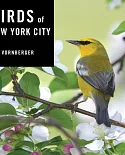Each September, millions of monarch butterflies, each weighing only a few grams, begin a journey of up to 2,800 miles from Canada and the Northeast to Transverse Neovolcanic Mountains, 150
miles southwest of Mexico City. The monarch is one of the few insects capable of such a journey (they are capable of trans-Atlantic crossings as well). Amazingly, this migration only takes
place every three to five generations, but somehow, by the last week of October, they arrive at the same small groups of oyamel fir trees their ancestors populated the year before. The
handful of roosting sites, located at about 10,000 feet altitude, may contain 20 to 30 million monarchs in a single site only a few acres in size.
In early March, the monarchs mate and start their journey back north. Along the way, the female lays her eggs on milkweed plants and dies. The eggs become larvae, or caterpillars, then pupas
and transform into butterflies. These then mate and continue their journey, find another milkweed, lay eggs and die. They will have lived only 60 to 90 days. The process continues for 2,500
miles and three to five generations until they find their summer home in the North.
The wintering grounds of the monarch were unknown to outsiders until 1975. The Amazing Monarch captures a set of truly stunning pictures of the monarch, considered by many to be nature's most
beautiful butterfly, in their rarely seen winter home.





















